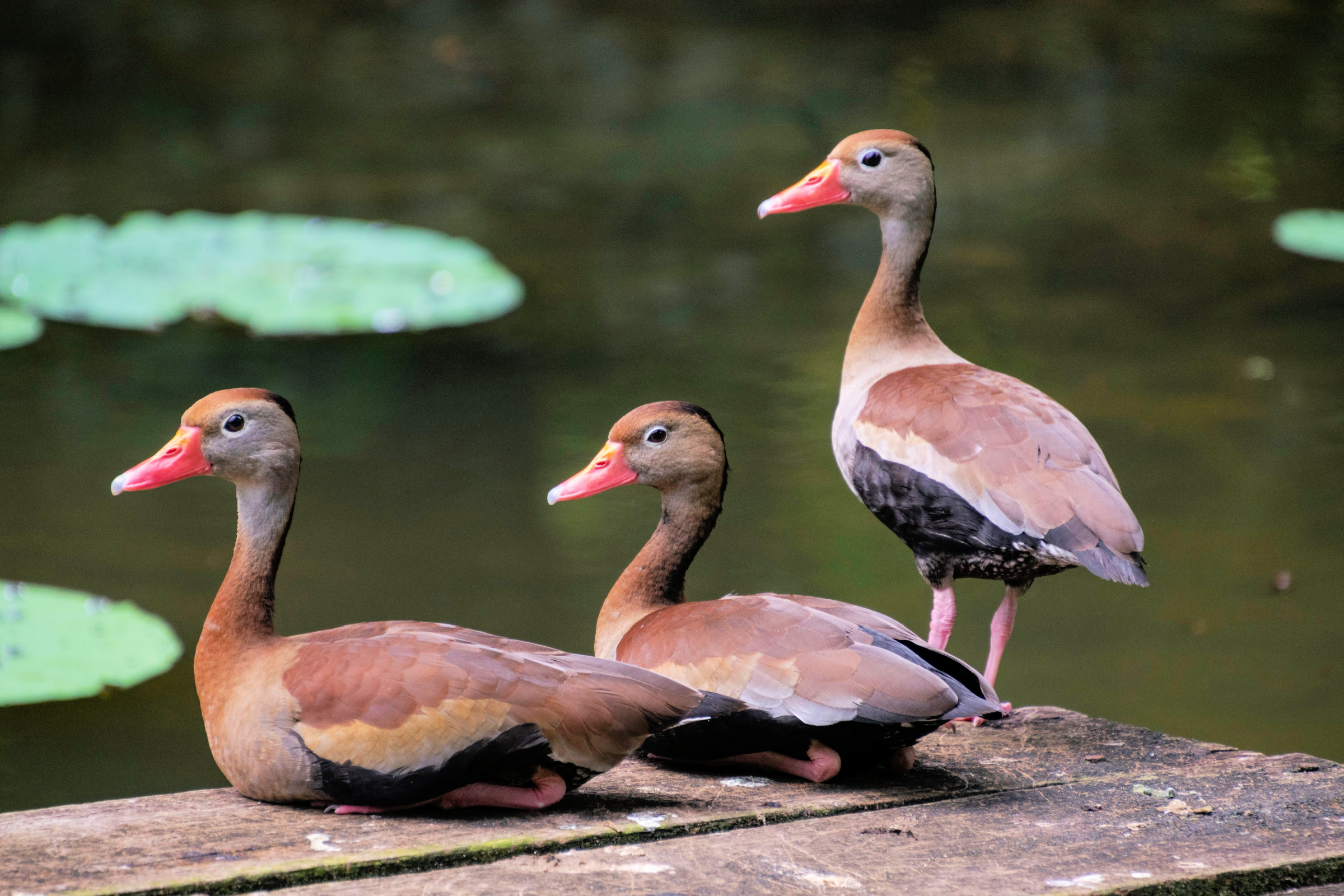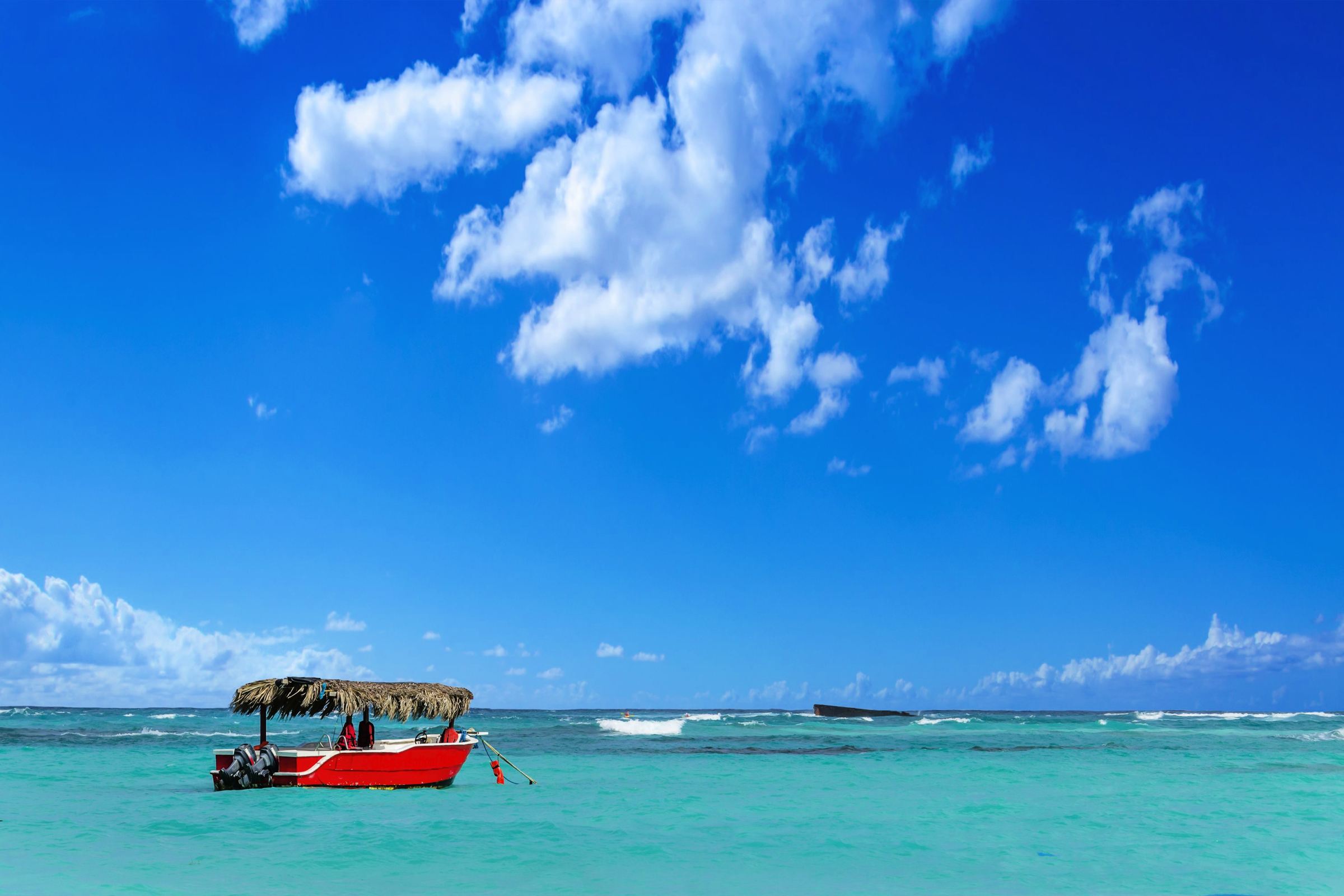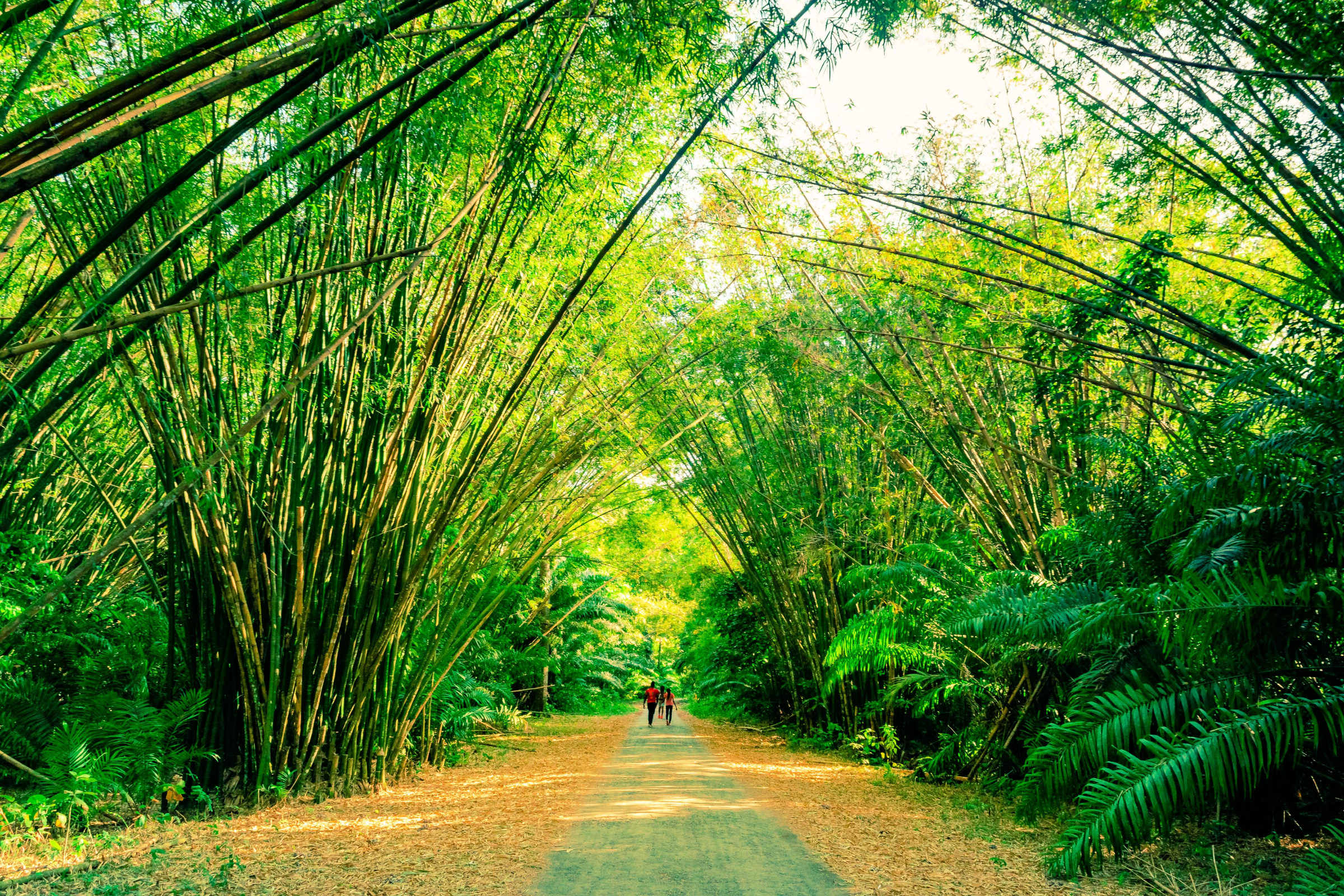Trinidad and Tobago offers experiences that go far beyond the average beach-related ventures featuring sunbathing and swimming offered at other Caribbean destinations. In fact, its profoundly rich natural landscape and environment open the doors to countless opportunities for water sports, hiking, and birdwatching – even swimming in pools below waterfalls and rivers! Here are some ideas:
Watersports

Besides swimming, you can also try:
1. Snorkelling and Scuba Diving
Both are popular in Trinidad and Tobago, with Tobago offering significantly better experiences due to the significantly more crystalline waters that are quite far away from the South American currents that bring lots of sediment. Some of the best dive spots are found on the windward coast, around Speyside, where you can come across many schools of fish, including odd sharks and deep-water manta rays, as well as beautiful reefs.
Other than that, you may also head to the leeward side and offshore spots like Sisters Rocks and Charlottesville, along with Flying Reef (aka the Shallows) at Crown Point, all brimming with a fantastic variety of fish, from butterfly fish and damsels to angel parrots and groupers. And, if you look closely around the coral, chances are you will even see lobsters and sea urchins living there.
2. Surfing
Undeniably, the best period to visit Trinidad and Tobago to enjoy windsurfing or kitesurfing (or any other water sport that requires wind, so to speak) is during the winter months, when the trade winds create the ideal conditions for this activity. For the most gratifying surging ventures, we suggest heading to areas around Toco in Trinidad and Mount Irvine in Tobago. If you want to rent boards, you can certainly find water sports equipment to rent in Tobago. Trinidad is a different story, though, and you may need to bring your own board. In any case, you can check with the Trinidad and Tobago Surfing Association at Surfing Association of Trinidad & Tobago | Home (surftt.org) for further contacts and details.
3. Sport Fishing
If fishing is your favourite pastime, you can sign up for a fishing tour that usually accommodates up to six people and includes bait and tackle. The cost at the moment of this writing is nearly US$300 for a half-day tour and almost twice as much for a full day. Some of the most common catches are tuna, sailfish, and marlin, while you can find more information about the available boats for charter and sport fishing, in general, at the Game Fishing Association of Trinidad and Tobago at Trinidad And Tobago Game Fishing Association (ttgfa.com).
Notes:
- The overwhelming majority of larger hotels in Tobago provide their guests with everything they need in the way of watersports, be it windsurfing, small sailboats, kayaks, or another. There is even Radical Sports, a fantastic watersports outlet at Pigeon Point Beach.
- The main water sports area in Trinidad is Chaguaramas, where you can do SUP and kayaking. Also, offshore of Port Spain are areas perfect for wake surfing, waterskiing, and wakeboarding.
Hiking

Hiking in Trinidad and Tobago has to start early in the day before it starts to get too hot, so you can cover most of the desired distance by midday. Alternatively, you can choose a trail that goes through the forest. Regardless of the option you select, you do not need to have any special equipment or be extremely fit for the majority of trails, at least.
Three of the most rewarding treks are the rainforest reserve, Chaguaramas Hills, and the Northern Range forests, especially the areas around Paria and Brasso Seco. Of course, you may also follow one of the countless waterfall treks, such as Guanapo Gorge.
Hiking options include either joining a local group of the many that jaunt into rural areas during the weekends and even arrange transport for its members, or joining experienced local hikers that set out with only a couple more trekkers. There are also hiking companies offering private hiking tours that you could consider. For scheduled hikes and larger groups, you can check out the long-standing daily newspaper called “The Trinidad and Tobago Field Naturalists’ Club” (ttfnc.org) and its “What’s on” section. Another source you could find useful might be Hashing (Port of Spain Hash House Harriers (POSH3)), which is a race that can also be done as a hike involving plenty of rum and beer drinking!
Birdwatching

When it comes to the regions ranked the best for birdwatching endeavours, both Trinidad and Tobago islands are steadily among the top 10 countries in terms of the number of bird species they have per square kilometre. Indeed, the diversity you will find here is like nowhere else in the Caribbean, boasting around 250 species known to breed and at least 439 species that are already recorded, as well as migrant North and South America species, which are most commonly seen between October through March and May through September, respectively. That being said, the most popular months for birdwatching are April and the period between January and March, which are all dry months.
Some of the best bird-watching places in Trinidad are the:
- Asa Wright Nature Centre (Asa Wright Nature Centre - Trinidad Nature Resort & Research Station) that is home to more than 15 species and is located in the Northern Range.
- Canopy Swamp that enables visitors to lay eyes on flocks of the national bird of Trinidad and Tobago, the scarlet ibis, via boat tours, alongside more than 150 species that have made the swampland their loving home.
- Point-a-Pierre Wildfowl Trust that houses a breeding programme while also providing visitors with the opportunity to see scarlet ibis and a magnificent waterflow conservation centre tucked in the heart of an industrial wasteland.
To catch amazing sights of the charming flying creatures that have made Trinidad and Tobago their favourite place on earth, you can visit Oropouche Lagoon (southwest), Nariva Swamp (east), Braso Seco (off the road that connects Blanchisseuse with Arima), Mount St. Benedict, Arena Dam, and Aripo Savannahs (south of Arima). Please note that visiting some of these sites may require a permit, so please check with your guide, who can get the needed permit or permits for you.
As for Tobago island, the windward coast is where the Bird Of Paradise Island or Little Tobago lies, a place where you can see birds in their natural habitat. You may also opt for the protected Tobago Forest Reserve, Crafton Caledonia Bird Sanctuary, the Adventure Farm, and the Bon Accord Lagoon.
Other Things to do in Trinidad and Tobago

- Take a glass bottom boat tour to Nylon Pool and Buccoo Reef.
- Try the signature dish of Trinidad, curry crab, and dumplings, or drive to Maracas Beach for a Bake & Shark sandwich.
- Join the Tobago Heritage Festival in the 2nd half of July.
- Visit La Brea Pitch Lake, the largest asphalt deposit in the world.
Trinidad and Tobago offers experiences that go far beyond the average beach-related ventures featuring sunbathing and swimming offered at other Caribbean destinations. In fact, its profoundly rich natural landscape and environment open the doors to countless opportunities for water sports, hiking, and birdwatching – even swimming in pools below waterfalls and rivers! Here are some ideas:
Watersports

Besides swimming, you can also try:
1. Snorkelling and Scuba Diving
Both are popular in Trinidad and Tobago, with Tobago offering significantly better experiences due to the significantly more crystalline waters that are quite far away from the South American currents that bring lots of sediment. Some of the best dive spots are found on the windward coast, around Speyside, where you can come across many schools of fish, including odd sharks and deep-water manta rays, as well as beautiful reefs.
Other than that, you may also head to the leeward side and offshore spots like Sisters Rocks and Charlottesville, along with Flying Reef (aka the Shallows) at Crown Point, all brimming with a fantastic variety of fish, from butterfly fish and damsels to angel parrots and groupers. And, if you look closely around the coral, chances are you will even see lobsters and sea urchins living there.
2. Surfing
Undeniably, the best period to visit Trinidad and Tobago to enjoy windsurfing or kitesurfing (or any other water sport that requires wind, so to speak) is during the winter months, when the trade winds create the ideal conditions for this activity. For the most gratifying surging ventures, we suggest heading to areas around Toco in Trinidad and Mount Irvine in Tobago. If you want to rent boards, you can certainly find water sports equipment to rent in Tobago. Trinidad is a different story, though, and you may need to bring your own board. In any case, you can check with the Trinidad and Tobago Surfing Association at Surfing Association of Trinidad & Tobago | Home (surftt.org) for further contacts and details.
3. Sport Fishing
If fishing is your favourite pastime, you can sign up for a fishing tour that usually accommodates up to six people and includes bait and tackle. The cost at the moment of this writing is nearly US$300 for a half-day tour and almost twice as much for a full day. Some of the most common catches are tuna, sailfish, and marlin, while you can find more information about the available boats for charter and sport fishing, in general, at the Game Fishing Association of Trinidad and Tobago at Trinidad And Tobago Game Fishing Association (ttgfa.com).
Notes:
- The overwhelming majority of larger hotels in Tobago provide their guests with everything they need in the way of watersports, be it windsurfing, small sailboats, kayaks, or another. There is even Radical Sports, a fantastic watersports outlet at Pigeon Point Beach.
- The main water sports area in Trinidad is Chaguaramas, where you can do SUP and kayaking. Also, offshore of Port Spain are areas perfect for wake surfing, waterskiing, and wakeboarding.
Hiking

Hiking in Trinidad and Tobago has to start early in the day before it starts to get too hot, so you can cover most of the desired distance by midday. Alternatively, you can choose a trail that goes through the forest. Regardless of the option you select, you do not need to have any special equipment or be extremely fit for the majority of trails, at least.
Three of the most rewarding treks are the rainforest reserve, Chaguaramas Hills, and the Northern Range forests, especially the areas around Paria and Brasso Seco. Of course, you may also follow one of the countless waterfall treks, such as Guanapo Gorge.
Hiking options include either joining a local group of the many that jaunt into rural areas during the weekends and even arrange transport for its members, or joining experienced local hikers that set out with only a couple more trekkers. There are also hiking companies offering private hiking tours that you could consider. For scheduled hikes and larger groups, you can check out the long-standing daily newspaper called “The Trinidad and Tobago Field Naturalists’ Club” (ttfnc.org) and its “What’s on” section. Another source you could find useful might be Hashing (Port of Spain Hash House Harriers (POSH3)), which is a race that can also be done as a hike involving plenty of rum and beer drinking!
Birdwatching

When it comes to the regions ranked the best for birdwatching endeavours, both Trinidad and Tobago islands are steadily among the top 10 countries in terms of the number of bird species they have per square kilometre. Indeed, the diversity you will find here is like nowhere else in the Caribbean, boasting around 250 species known to breed and at least 439 species that are already recorded, as well as migrant North and South America species, which are most commonly seen between October through March and May through September, respectively. That being said, the most popular months for birdwatching are April and the period between January and March, which are all dry months.
Some of the best bird-watching places in Trinidad are the:
- Asa Wright Nature Centre (Asa Wright Nature Centre - Trinidad Nature Resort & Research Station) that is home to more than 15 species and is located in the Northern Range.
- Canopy Swamp that enables visitors to lay eyes on flocks of the national bird of Trinidad and Tobago, the scarlet ibis, via boat tours, alongside more than 150 species that have made the swampland their loving home.
- Point-a-Pierre Wildfowl Trust that houses a breeding programme while also providing visitors with the opportunity to see scarlet ibis and a magnificent waterflow conservation centre tucked in the heart of an industrial wasteland.
To catch amazing sights of the charming flying creatures that have made Trinidad and Tobago their favourite place on earth, you can visit Oropouche Lagoon (southwest), Nariva Swamp (east), Braso Seco (off the road that connects Blanchisseuse with Arima), Mount St. Benedict, Arena Dam, and Aripo Savannahs (south of Arima). Please note that visiting some of these sites may require a permit, so please check with your guide, who can get the needed permit or permits for you.
As for Tobago island, the windward coast is where the Bird Of Paradise Island or Little Tobago lies, a place where you can see birds in their natural habitat. You may also opt for the protected Tobago Forest Reserve, Crafton Caledonia Bird Sanctuary, the Adventure Farm, and the Bon Accord Lagoon.
Other Things to do in Trinidad and Tobago

- Take a glass bottom boat tour to Nylon Pool and Buccoo Reef.
- Try the signature dish of Trinidad, curry crab, and dumplings, or drive to Maracas Beach for a Bake & Shark sandwich.
- Join the Tobago Heritage Festival in the 2nd half of July.
- Visit La Brea Pitch Lake, the largest asphalt deposit in the world.




